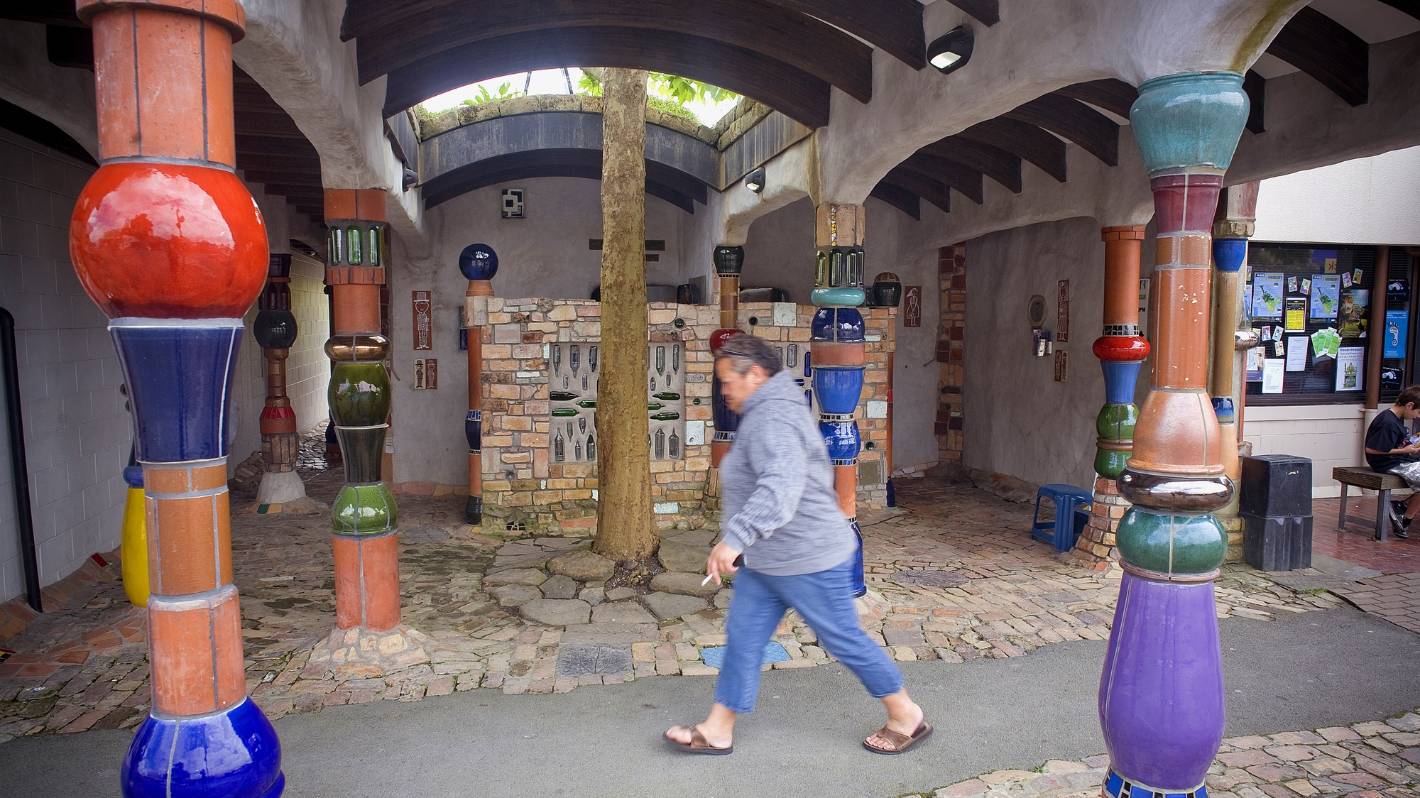Kawakawa’s famous Hundertwasser toilets are not only the best place in Northland to “go”, they are now a recognised historical place.
The colourful and quirky toilets have been listed as a Category 1 historic place by Heritage NZ Pouhere Taonga – the only existing, standalone public toilets to achieve such recognition.
While the Hundertwasser toilets are not particularly old – they were created in 1999 – its heritage values are remarkable, said Hertiage NZ Northland manager Bill Edwards.
You could say Edwards is flushed with pride, after he researched and wrote the proposal for the listing.
READ MORE:
* Hundertwasser a must-visit for every Kiwi
* Hundertwasser Art Centre in Whangārei touted as ‘new national asset’
* Te Hononga: Kawakawa’s new Hundertwasser-inspired hub is a freedom camper’s dream
The superbowls were designed by the late Austrian-born artist Friedensreich Hundertwasser, who made a home in the Bay of Islands despite his international fame.
“The distinctive structure is unique and is the only public building in New Zealand Hundertwasser was directly involved with. Today it is a Northland icon, drawing an estimated 250,000 visitors a year,” said Edwards.
Neville Marriner/Stuff
The Hundertwasser toilets, on SH1 in Kawakawa, attract up to 250,000 visitors a year. (File photo)
The famous flushers were named by Traveller in 2017 as the world’s number one top toilet attraction.
In fact, the iconic convenience on State Highway 1 is so famous, concern was raised in 2018 that someone could get hit by a car trying to snap the best photo.
The toilets’ tourist pulling-power has been capitalised in Northland, with a Hundertwasser-inspired public space, Te Hononga, opening in Kawakawa in 2020 and the Hundertwasser Art Centre opening in Whangārei in 2022.
The toilets were a renovation – Hundertwasser called it “surgery” – to a utilitarian concrete block structure, built in 1969.
The renovation was a community effort, with Bay of Islands College students preparing the ceramic tiles and volunteers completing the work.
Recycled materials included bricks from a former Bank of New Zealand building and recycled bottles, which let in light but provide privacy.
The roof is a living roof which includes flax, native grasses and its tree tenants, who “pay” their rent with oxygen and beauty.
Edwards said Hundertwasser’s characteristics – including bright colours and non-uniformity – help transform the most humble of public facilities.
“The result is a manifestation of his vision of the philosophy, that the building should be a peace accord with nature. What he and the wider community created is a building that brings joy.”




